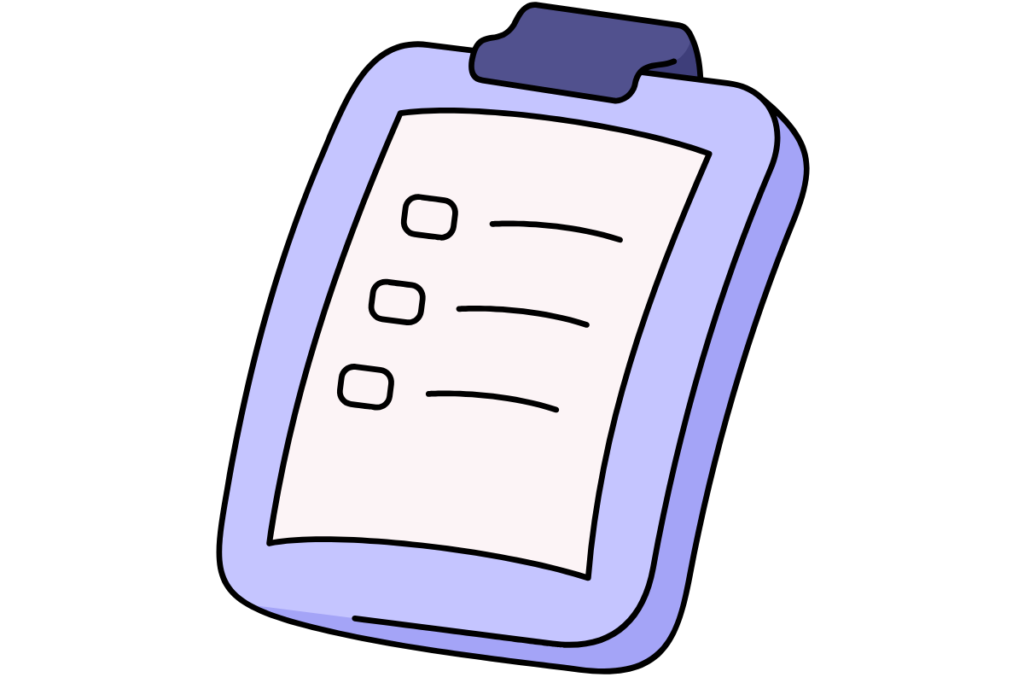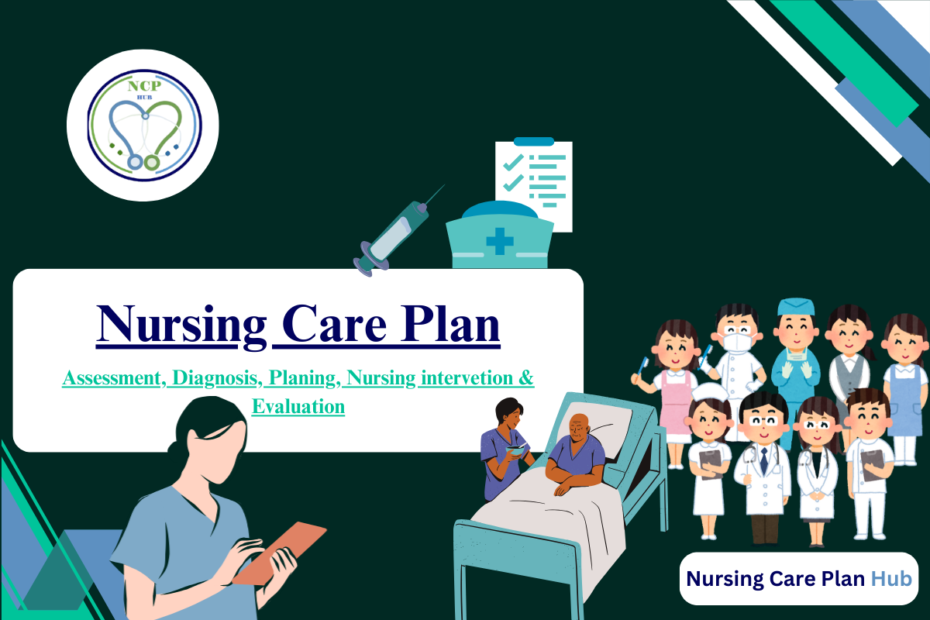A Nursing Care Plan (NCP) is a comprehensive, systematic approach to patient care. It is a written document that outlines a patient’s needs and the strategies to meet those needs. NCPs play a pivotal role in the nursing process, providing a structured framework for delivering individualized, evidence-based care.
Table of Content:
- Why Are Nursing Care Plans Essential?
- Who Uses Nursing Care Plans?
- Key Components of a Nursing Care Plan
- Types of Nursing Care Plans
- Benefits of a Nursing Care Plan
- Steps to Create an Effective Nursing Care Plan
- Real-Life Examples of Nursing Care Plans
- Examle from NCP Hub:
- Challenges in Nursing Care Planning
- Conclusion
Why Are Nursing Care Plans Essential?
Nursing Care Plans (NCPs) are foundational tools in the healthcare system, ensuring that patient care is effective, consistent, and patient-centered. Here’s a deeper look into their importance:
1. Enhancing Patient Care
Nursing care plans provide a structured approach to patient care, allowing nurses to tailor interventions specifically to the individual needs of each patient. This personalization ensures:
- Holistic Approach: Care plans take into account not just the physical health of the patient but also their emotional, psychological, and social needs.
- High Standards of Care: By relying on evidence-based practices, care plans ensure that every intervention is rooted in the latest research and best practices.
- Proactive Care: Anticipating complications and addressing potential risks through thoughtful planning improves patient outcomes. For example, for a patient at risk of pressure ulcers, the care plan might include regular repositioning and skin assessments to prevent complications.
2. Ensuring Consistency Across Providers
In a multidisciplinary healthcare team, consistency in care is paramount. Nursing care plans act as a central document that aligns everyone’s efforts:
- Unified Goals: Whether it’s the physician prescribing medications or the physiotherapist aiding in mobility, all team members work toward the same objectives outlined in the care plan.
- Continuity of Care: When patients move between care settings (e.g., from a hospital to a rehabilitation center), the care plan ensures seamless transitions without lapses or redundancies in treatment.
- Clear Communication: Miscommunication in healthcare can lead to errors. NCPs minimize this risk by clearly documenting each step of the care process.
3. Empowering Patients
Involving patients in their own care planning fosters a sense of ownership and empowerment, leading to better engagement and compliance:
- Educating Patients: Care plans help patients understand their condition, the rationale behind each intervention, and the expected outcomes. This knowledge reduces anxiety and builds trust in the healthcare team.
- Promoting Active Participation: When patients participate in setting goals, such as managing their blood sugar levels or adhering to a rehabilitation program, they are more likely to remain motivated and committed.
- Fostering Autonomy: Especially for chronic conditions, care plans equip patients with the skills and knowledge they need to manage their health independently. For instance, a care plan for a diabetic patient might include education on self-monitoring blood glucose and dietary adjustments.
4. Ensuring Safety and Quality
Safety is a cornerstone of healthcare, and nursing care plans are instrumental in identifying risks and implementing preventive measures:
- Risk Assessment: For instance, a patient at risk of falls will have a care plan that includes interventions like bed alarms or assistance during mobility.
- Evidence-Based Practices: Care plans integrate research-backed interventions to ensure that patient safety and quality care are never compromised.
- Legal and Professional Accountability: Documenting every step of care ensures that nurses can demonstrate adherence to professional standards and protocols.
5. Supporting Collaborative and Patient-Centered Care
- Teamwork in Action: Nurses, physicians, therapists, and social workers collaborate more effectively with a clear plan in place.
- Customization for Individual Needs: NCPs ensure that cultural, social, and emotional factors unique to each patient are respected and addressed.
- Tracking Progress: Regular evaluation of the care plan allows the team to adapt interventions based on the patient’s progress or changing needs.
In summary, nursing care plans are not just administrative tools; they are dynamic frameworks that enhance care delivery, ensure safety, and empower patients while fostering a collaborative and consistent approach to healthcare.
Who Uses Nursing Care Plans?
Nursing Care Plans (NCPs) are utilized by various stakeholders in healthcare to ensure comprehensive, patient-centered care. Each group plays a unique role in leveraging the benefits of NCPs. Here’s a deeper dive into how they are used:
1. Nurses
Nurses are the primary users of nursing care plans. They rely on these plans throughout the nursing process to deliver optimal care:
- Assessment: Nurses gather detailed patient information, such as medical history, physical examination findings, and psychosocial data, to create a care plan tailored to the patient’s needs.
- Planning: Using NCPs, nurses establish specific, measurable, achievable, relevant, and time-bound (SMART) goals for patient outcomes. For instance, a goal for a patient with hypertension might be to maintain blood pressure within a safe range within two weeks.
- Implementation: Nurses execute the interventions outlined in the care plan, such as administering medications, providing education, or assisting with daily activities.
- Evaluation: By regularly assessing patient progress, nurses use NCPs to determine whether the interventions are effective or need adjustment. This ongoing evaluation ensures that care remains aligned with the patient’s needs.
- Documentation and Accountability: NCPs serve as a record of the nurse’s professional judgment and actions, which is crucial for legal and ethical accountability.
2. Healthcare Teams
A multidisciplinary team often collaborates to provide holistic care for patients, and NCPs facilitate seamless communication and consistency among the team members:
- Physicians: Use the care plan to align medical treatments and ensure that they complement nursing interventions. For example, a physician treating a patient with diabetes can adjust medications while considering the dietary goals set in the nursing care plan.
- Therapists (Physical, Occupational, Speech): Refer to the care plan to align rehabilitation efforts with nursing goals. A physical therapist might work on improving mobility in conjunction with nursing interventions to prevent pressure ulcers.
- Pharmacists: Use the care plan to review medication regimens and ensure that prescribed drugs align with the patient’s overall care strategy.
- Social Workers and Case Managers: Collaborate with nurses using NCPs to address social determinants of health, such as access to resources or family support systems.
- Dietitians: Contribute to care plans for patients requiring specialized nutrition, ensuring consistency across dietary and nursing interventions.
3. Patients and Families
NCPs are valuable tools for engaging patients and their families in the care process. This involvement enhances understanding, compliance, and satisfaction with care:
- Insight into Care Strategies: Patients and families can review the care plan to understand the rationale behind each intervention, such as why a certain medication is prescribed or why frequent mobility is recommended.
- Empowerment and Participation: By including patients in goal-setting, care plans encourage active participation. For example, a patient recovering from surgery may work with the care team to set rehabilitation milestones.
- Education: Care plans help families understand the patient’s condition, the expected outcomes, and their role in supporting recovery. For instance, a family member might learn about dietary adjustments for a loved one with heart disease.
- Building Trust: Transparency in care planning fosters trust and strengthens the nurse-patient-family relationship, ensuring better adherence to the care plan.

Key Components of a Nursing Care Plan
A robust nursing care plan includes the following essential elements from Nursing Care Plan Writing Guide:
1. Assessment
- The foundation of any care plan is a thorough assessment, which involves:
- Collecting Data: Physical examinations, patient interviews, and diagnostic tests.
- Identifying Risks: Such as potential complications from medical conditions.
- Understanding Psychosocial Factors: Including the patient’s emotional state, cultural beliefs, and support systems.
2. Diagnosis
- Based on the assessment, nurses identify the patient’s health problems or risks using standardized NANDA International nursing diagnoses. For instance:
- Medical Diagnosis: Stroke.
- Nursing Diagnosis: Impaired physical mobility related to neuromuscular damage.
3. Goals and Outcomes
- Goals provide a roadmap for care. They should be SMART (Specific, Measurable, Achievable, Relevant, Time-bound):
- Short-term Goal: “The patient will verbalize pain relief within 1 hour of medication administration.”
- Long-term Goal: “The patient will regain full mobility in the affected limb within 6 weeks.”
4. Interventions
- Specific actions nurses take to meet the set goals. These include:
- Administering medications.
- Educating patients about their condition.
- Monitoring vital signs and reporting abnormalities.
5. Evaluation
- This step assesses whether the goals were achieved and determines if the care plan needs adjustment. For example:
- If a patient’s pain persists despite intervention, the plan might require new strategies.
Types of Nursing Care Plans
1. Formal vs. Informal
- Formal: These are written and structured plans often included in patient records. They are essential for accountability and consistency.
- Informal: These are mental notes or quick strategies used by nurses during routine care for less critical needs.
2. Standardized vs. Individualized
- Standardized: Pre-designed plans for common conditions, such as diabetes or hypertension. These are efficient but may lack personalization.
- Individualized: Tailored specifically to the patient’s unique needs, considering factors like cultural values or specific comorbidities.
3. Computerized Care Plans
- Technology has revolutionized care planning. Electronic Health Records (EHRs) now integrate NCPs, allowing for real-time updates and easier access by the care team.

Benefits of a Nursing Care Plan
Nursing Care Plans (NCPs) offer several key benefits that improve the overall quality of patient care. Here’s a closer look at some of the essential advantages:
1. Enhances Continuity of Care
- NCPs ensure a smooth transition between shifts or care settings by documenting important details about the patient’s care. This continuity is crucial for preventing disruptions in treatment and ensuring consistent care across multiple providers.
2. Improves Communication
- By acting as a centralized reference, NCPs improve communication among the healthcare team. Nurses, doctors, and other professionals can review the care plan to stay aligned on the patient’s progress, goals, and treatment interventions, promoting a collaborative approach.
3. Provides a Roadmap for Evidence-Based Care
- NCPs incorporate current research and guidelines to ensure that interventions are effective. They help ensure that the care provided is up-to-date with the latest best practices, which leads to better patient outcomes.
4. Supports Legal and Professional Accountability
- NCPs provide a clear and documented record of the care provided. This is essential for both legal protection and professional accountability, showing that care was delivered according to established standards and protocols.
Steps to Create an Effective Nursing Care Plan
Conduct Comprehensive Assessments
Include physical, emotional, and social factors in your evaluation.
Identify Nursing Diagnoses
Use established frameworks like NANDA International for clarity and accuracy.
Set SMART Goals
For example: “The patient will maintain a blood pressure below 140/90 mmHg within two weeks.”
Plan and Implement Interventions
Clearly define nursing actions, prioritizing those addressing the most critical issues.
Evaluate and Revise
Regularly monitor outcomes and adjust the plan as necessary.

Real-Life Examples of Nursing Care Plans
1. Managing a Diabetic Patient’s Blood Sugar Levels
- Assessment: Blood glucose tests, dietary habits.
- Diagnosis: Unstable blood glucose related to dietary mismanagement.
- Goal: Maintain blood glucose between 70-130 mg/dL.
- Interventions: Monitor levels, educate on meal planning, administer insulin.
2. Post-Operative Recovery
- Focus: Pain management, preventing infections, and promoting mobility.
3. Supporting a Patient with Chronic Pain
- Emphasis on: Pain relief, psychosocial support, and physical therapy.
Examle from NCP Hub:
- Nursing Care Plan on Sepsis
- Nursing Care Plan for Fluid Volume Deficit in Pediatric Patient
- Nursing Care Plan for Gastroenteritis
Nursing Care Plan on Insomnia - Nursing Care Plan for Impaired Gas Exchange
- Nursing Care Plan for Impaired Skin Integrity: Pressure Ulcer
- Nursing Care Plan on Hypokalemia
Nursing Care Plan on Hypertension or High BP - Nursing Care Plan for Postoperative Pain
- Nursing Care Plan on Fever: Hyperpyrexia and Viral Fevers
Challenges in Nursing Care Planning
While nursing care plans are essential for effective patient care, several challenges can impact their implementation and quality. Here’s a closer look at some of these challenges:
1. Time Constraints
- Limited Time for Documentation: Nurses often work in fast-paced environments with numerous patients. The demand for immediate care, such as administering medications or assisting with procedures, can make it difficult to dedicate time to creating comprehensive care plans.
- High Patient Load: With high patient-to-nurse ratios, nurses may need to prioritize direct care over documentation, leaving less time for detailed care planning. This can sometimes lead to rushed or incomplete care plans.
2. Keeping Plans Updated
- Rapidly Changing Conditions: Patient conditions can change quickly, especially in acute care settings. Nurses must frequently revise care plans to reflect these changes, ensuring interventions are always aligned with the patient’s current needs.
- Challenges in Regular Monitoring: Continuous monitoring is required to update the care plan, and in busy settings, nurses may find it difficult to monitor and revise plans promptly, potentially leading to outdated interventions or missed opportunities for timely adjustments.
3. Balancing Standardization with Individualized Care
- Using Standardized Templates: While standardized care plan templates offer efficiency and consistency, they may not fully address the unique needs of every patient. A generic approach may overlook specific cultural, social, or personal factors that impact the patient’s care.
- Customization Needs: Nurses must adapt standardized templates to better suit individual patient circumstances, which can be time-consuming and require significant clinical judgment. Balancing standard practices with personalized interventions is essential but can be challenging in busy healthcare environments.
Conclusion
Nursing care plans are indispensable in modern healthcare. They not only provide a structured approach to patient care but also ensure better outcomes through collaboration, accountability, and patient involvement. NCPs are more than just documents; they represent a dynamic, holistic approach to healing and recovery.
We’d love to hear your experiences with nursing care plans. How do you use them in your practice or studies? Share your insights in the comments below! Explore more at NCPHub to discover in-depth guides, examples, and templates that enhance your nursing care delivery.
